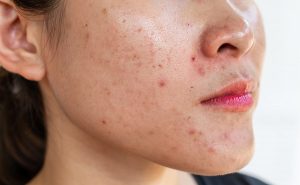Add another danger that e-cigarettes pose to teenagers: A new study finds secondhand exposure to vaping may raise the chances of asthma attacks in adolescents with the respiratory condition.
Middle school and high school students with asthma were 27 percent more likely to have suffered an asthma attack if they’d been exposed to vapor from someone else’s e-cigarette use, the researchers found.
“While we cannot definitively say these products worsen asthma, I think if I was a parent, I wouldn’t want to risk my kids being around people using these products,” said lead researcher Jennifer Bayly. She is a student at Rutgers Robert Wood Johnson Medical School in New Brunswick, N.J.
These findings and others belie the general perception that e-cigarette emissions carry no risk, said Dr. Karen Wilson, chief of general pediatrics at the Icahn School of Medicine at Mount Sinai in New York City.
“Contrary to the idea that it’s a harmless water vapor, it actually contains some of the same chemicals that we find in tobacco smoke, along with particulate matter that can be very irritating to people with asthma,” Wilson said.
There is moderate scientific evidence that e-cigarette use causes increased cough and wheeze in teenagers, and an increase in asthma symptoms, according to a recent National Academies of Sciences, Engineering and Medicine report cited by the study authors.
For their research, Bayly and her colleagues gathered data from the 2016 Florida Youth Tobacco Survey. It included about 33,500 high school students and just over 36,000 middle school students, aged 11 to 17. The study focused on 11,830 students who reported having asthma.
Overall, 21 percent of kids with asthma said they’d had an asthma attack during the previous year, and 33 percent said they’d been exposed to secondhand vapor from an e-cigarette.
This exposure to secondhand vapor was tied to a significantly increased risk of an asthma attack, even after researchers accounted for other factors, such as whether the teens used an e-cigarette themselves or had been exposed to tobacco smoke.
The report was published Jan. 4 in the journal Chest.
“The authors did a nice job of controlling for other sources” of exposure to lung-irritating substances, said Dr. Christy Sadreameli, a pediatric pulmonologist at Johns Hopkins Hospital in Baltimore and a spokeswoman for the American Lung Association.
If anything, the new study probably understated the effect secondhand e-cigarette vapor has on kids, Wilson and Sadreameli said.
That’s partly because the study focused on adolescents, Wilson said. “I’d be very worried to think about the impact on small children who can’t escape these secondhand aerosols,” she explained.
It’s also because the survey data is now years old, Sadreameli added, and e-cigarette use has surged even more since the advent of Juul, a leading e-cig brand that is popular with young people.
“We know that uptake of electronic cigarettes is happening at a pretty rapid rate,” Sadreameli said. “If anything, there may be even more students, if they did the study today, who are being exposed to [electronic nicotine delivery systems] or possibly using them.”
E-cigarette vapor contains propylene glycol, vegetable glycerin, nicotine and many different flavoring agents, the researchers noted. Each have been linked to inflammation and irritation in the lungs that could impact asthma sufferers.
Parents should limit kids’ exposure to secondhand vapor, particularly if they have asthma, Wilson and Sadreameli said.
But Gregory Conley, president of the American Vaping Association, a nonprofit that advocates for sensible regulation of vaping products, took issue with the findings.
“Unfortunately, the authors of this study failed to disclose what percentage of vapor-exposed youth were also exposed to cigarette smoke — despite having that data available to them — therefore making it impossible for a reader to determine whether any effect remains if cigarette smoke exposure is eliminated,” Conley said.
More information
The University of California, Davis has more about e-cigarettes.
Copyright © 2025 HealthDay. All rights reserved.

























